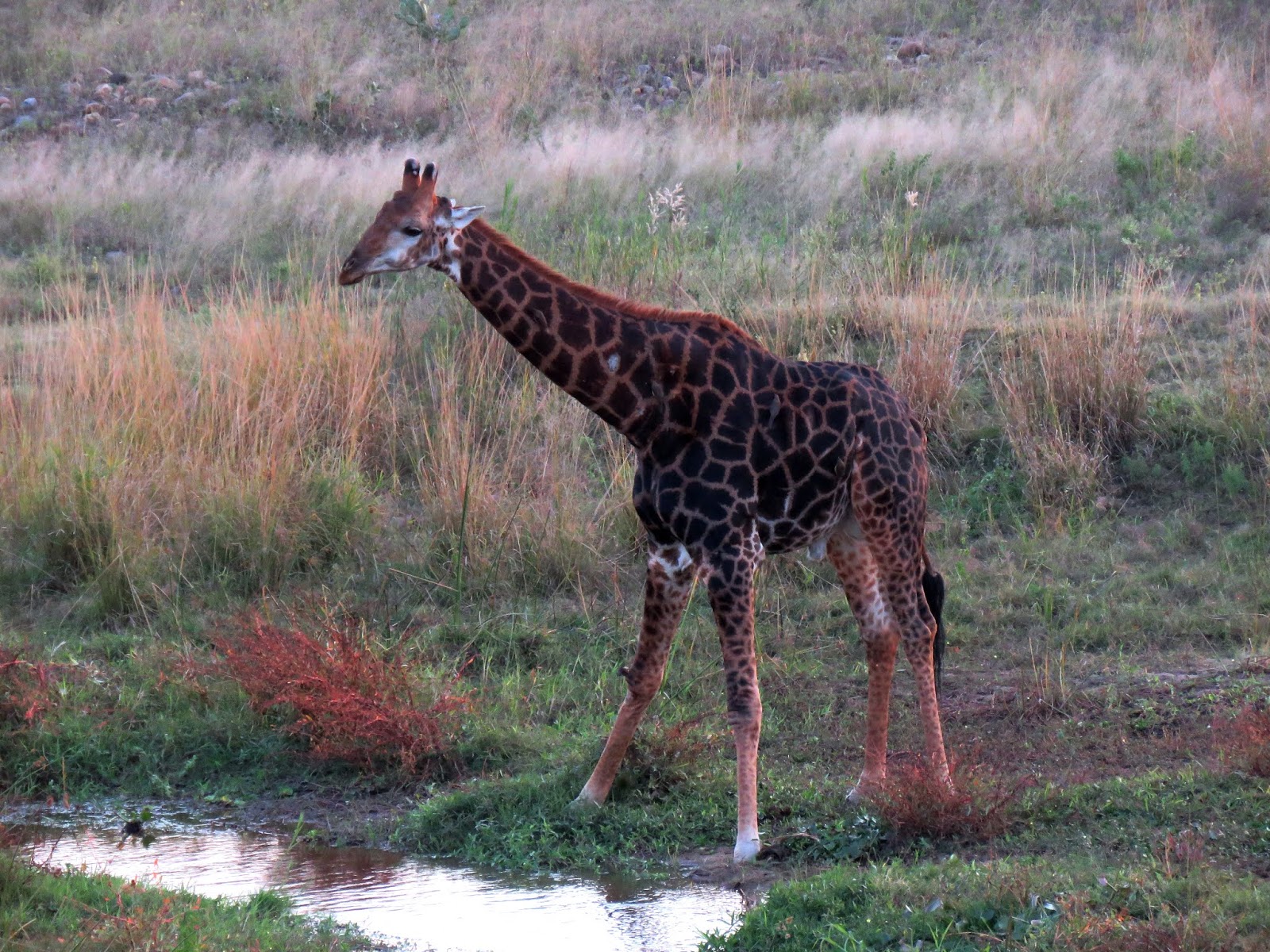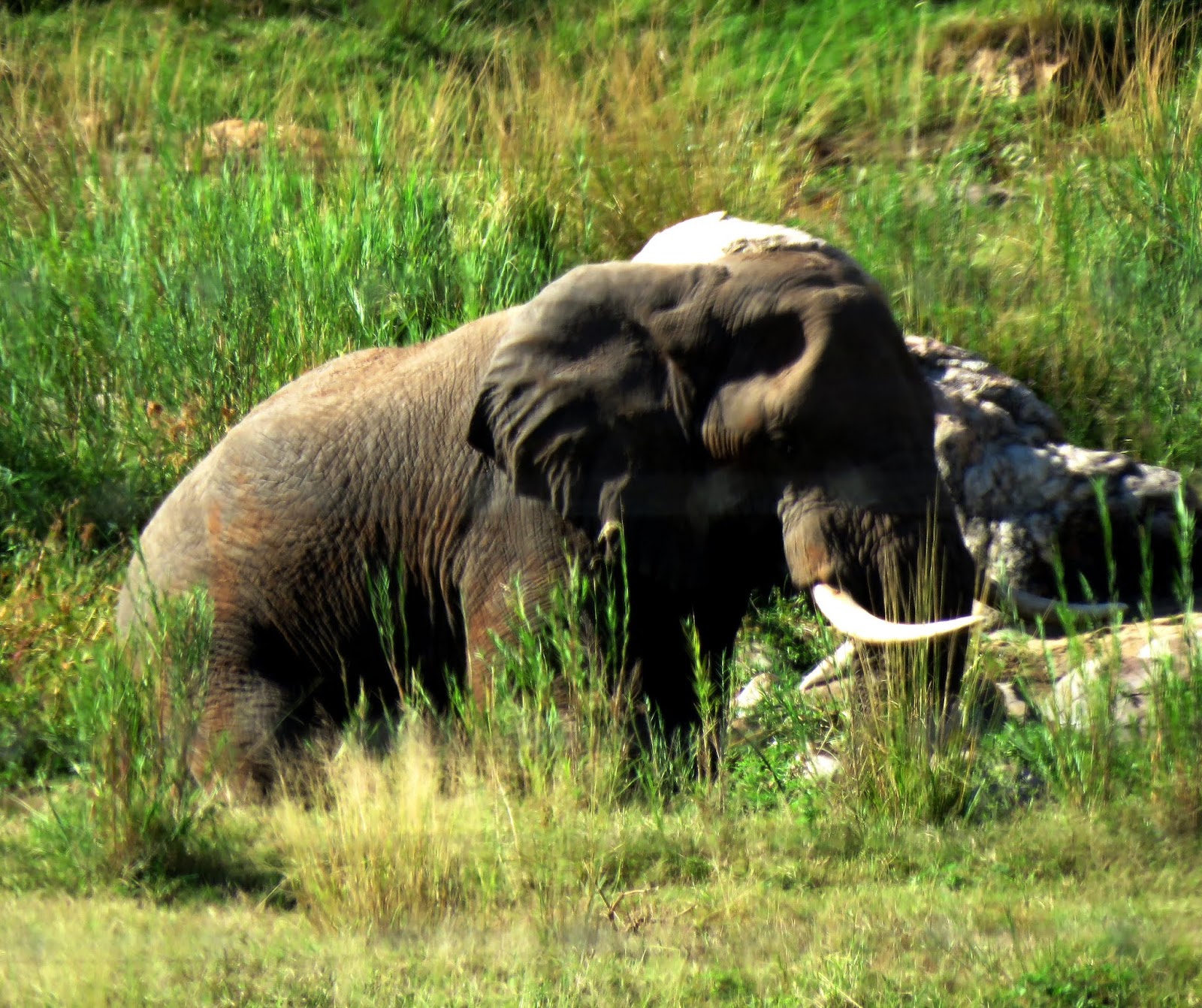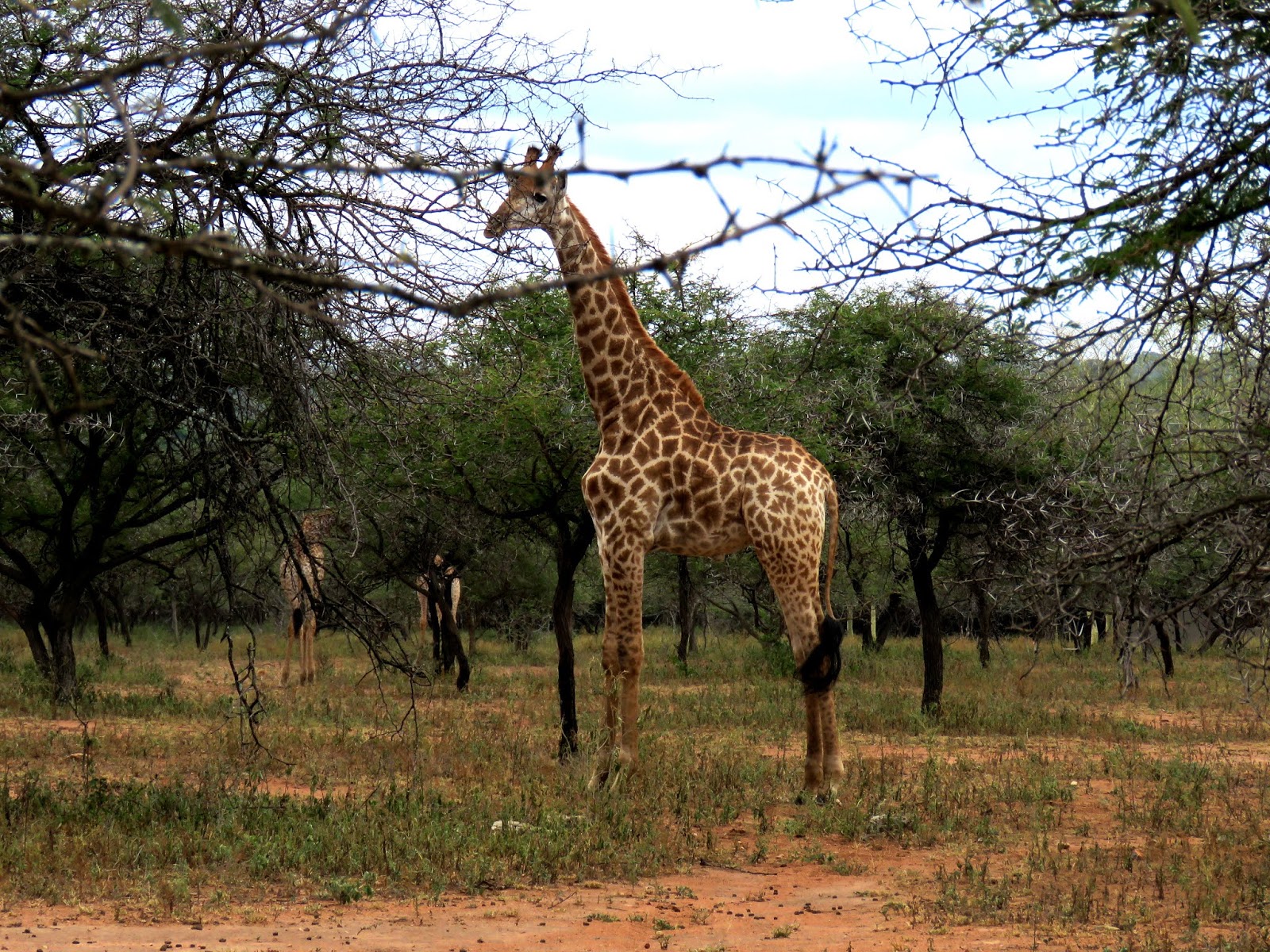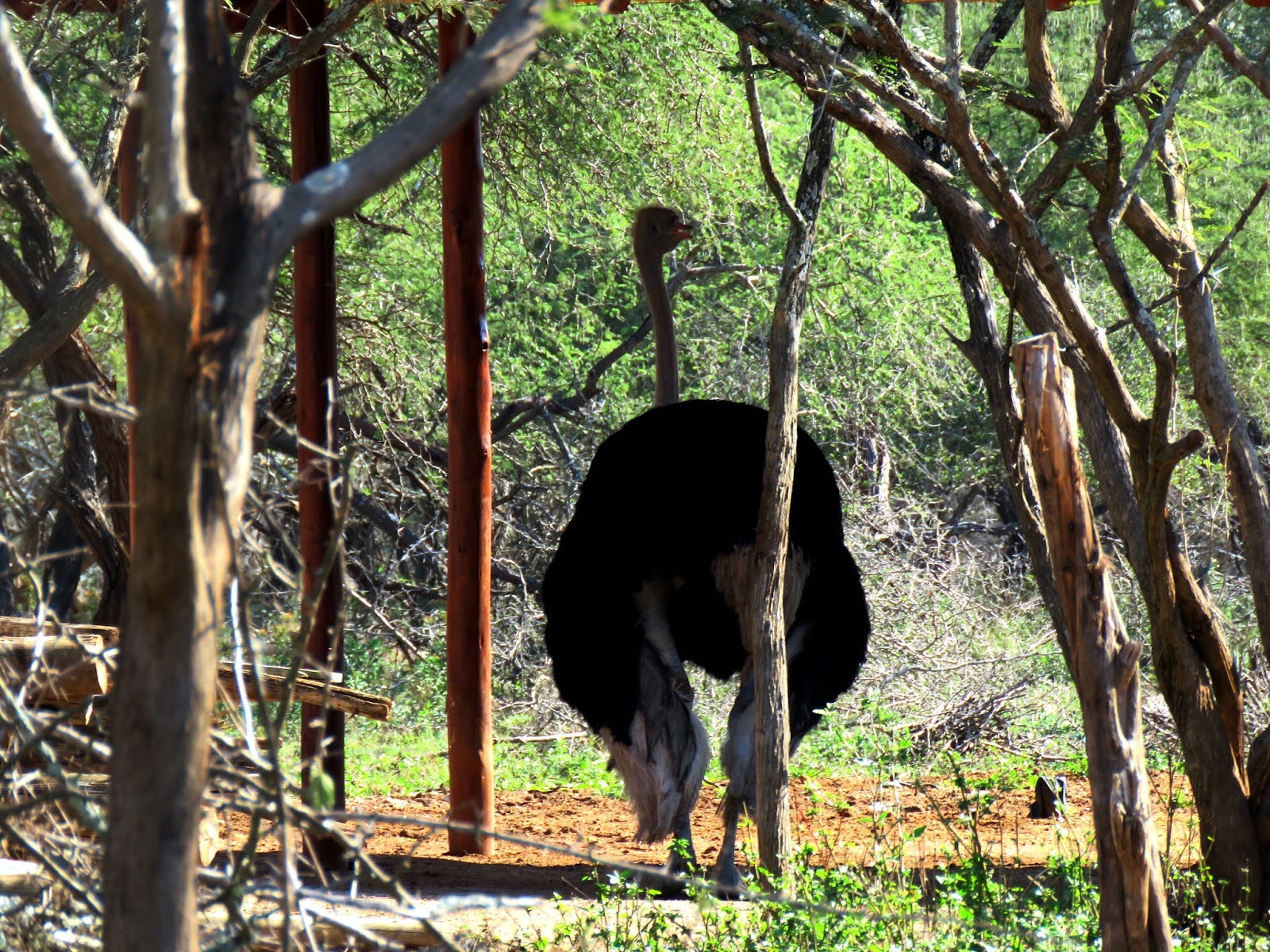 |
| Mongooses stay close to one another, often seen grooming and cuddling one another. |
“Sighting of the Day in The Bush”
 |
| We love all the wildlife in Marloth and Kruger Parks, but baboons are our least favorite. They are intelligent and destructive, as are the Vervet monkeys mentioned in yesterday’s post that entered our house. Baboons are much more robust and larger than Vervet monkeys. |
Today’s post will be done quickly! At 9:00 am, we’re taking off for Kruger National Park to meet up with friends Cathi and Rick from Kauai, Hawaii. This will be the first time we’ll see them since early 2015 when we spent four months on the island making new friends over the extended period, many of whom we’ve stayed in close touch with.
 |
| Waterbucks are often found along the Crocodile River, frequently accompanied by a cattle egret who feeds off their “leftovers.” |
Our original plan was to meet Cathi and Rick in Lower Sabie at noon, but we received a message last night asking if we could make it by 11:00 am instead. As usual, getting up early, I felt determined to get today’s post done and uploaded before leaving at 9:00 am.
As of this writing, I have about one hour to rush through and get it done. If you spot errors, please bear with us. We’ll correct them upon our return later in the day.
 |
| One of our most frequent visitors is the bushbuck, more often females than males. The females, without antlers, are gentle and graceful. It has been reported that male bushbucks can attack hunters when provoked and cause severe injury or death. |
One may ask, “Why not do the post when we return?” This makes sense, but we don’t expect to return until 4:00 pm or so, and at that point, we’ll have to make dinner and set up the veranda for our usual “night-time watching.”
Neither of us likes to rush. We’re always the early birds. Our friends Kathy and Don asked, “Why are you always the first ones to arrive?”
 |
| Male bushbucks are cautious around humans and seldom relax in our presence. This particular male feels comfortable that we aren’t seen as a threat and often lounges in the yard. |
The answer to this question easily falls into our continuing plan of avoiding stress in our lives of world travel. Rushing last minute creates stress. As a result, we make every effort, regardless of the circumstances, to either being right on time or a few minutes early, when possible.
Often, we arrive at airports a half-hour before necessary, which is an environment that can be wrought with stress and frustration. We’d rather quietly wait for an event to begin than be rushing, under stress, to get out the door. We’d instead grab a beverage at a Wi-Fi restaurant and relax waiting for our flight than staring at the clock, worrying we won’t be on time.
 |
| A wildebeest is a rare visitor to our yard. |
Speaking of airports, on Friday, we paid for and booked our next trip out of South Africa on August 16th, the last day of our 90-day visa, which we’ll need to renew to stay in South Africa.
As explained in prior posts, South Africa doesn’t allow foreigners to visit any surrounding countries to re-enter for a new visa stamp. It’s vague in the law if even leaving for a non-bordering country entitles a visitor to re-enter for a unique 90-day visa (for some passports, not all).
 |
| The recent full moon. |
A few weeks ago, we found we were able to re-enter immigration at the airport in Nelspruit for a new 90-day visa when we’d gone to Zambia for multiple tours (Victoria Falls, Chobe, Zambezi River) for a period of one week.
If we’d gone to another country requiring going through immigration in Johannesburg, we might not have been allowed to re-enter. Our best bet was the small airport in Nelspruit, which only has one direct international route to Zambia…was our best bet.
 |
| Hornbills spend considerable time visiting especially when they love spending time feeding on our bird feeder. It appears she has a seed in her mouth. |
Based on our particular circumstances, we decided we’d have no choice but to return to Zambia to fly out of and back into Nelspruit Mpumalanga Kruger Airport. We’ve accepted this reality along with the cost necessary for yet another similar trip.
We’re leaving on August 16th and returning on August 23rd. We got a great deal on a package with Expedia on our site for a total cost of the roundtrip flight for both of us, including a week-long stay at the same hotel (which we found to be quite good) for a total of ZAR 21,946 (US $1680), less than we paid last time.
What will we do again in Zambia? More tours. When we only spent the morning in Chobe National Park, we were sorely disappointed when the safari ended. We longed to see more. This will be our opportunity to return to this special place which over 30,000 elephants make their home.
 |
| The mating season continues. Warthogs hang around with females and their offspring with high hopes. The males make a train-like sound when they feel particularly amorous. |
We’ll have no shortage of ways to stay busy when four countries come together at the Zambezi River in Zambia. We’ll plan everything once we arrive.
For now, we can sit back and relax and continue to enjoy our next few months until we have to figure this out one more time in November. In February, after the next 90 days, we’ll be off to Kenya, not needing a visa extension again.
With time moving on here, I need to wrap this up. Hopefully, tomorrow, we’ll have plenty of great photos to share from today’s self-drive through Kruger. Once again, we feel the anticipation and excitement of going into Kruger, especially when we have the opportunity to see old friends.
Have a fantastic day!
Photo from one year ago today, June 10, 2017:
 |
| One year ago, tonight was Minnesota, “Meet & Greet,” where we had an opportunity to meet some of our Minnesota readers and other friends. It was a great night. For that post: “Marie and Bill started following us at the beginning of our posts which started in March 2012. It was Marie who inspired the fabulous idea of the “Meet & Greet.” Thanks, Marie and Bill! It was wonderful to meet you in person at long last and fun to meet another couple who are “glued at the hip” like us!” For more photos from the event, please click here. |





































































































